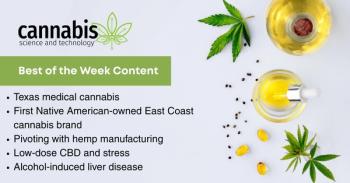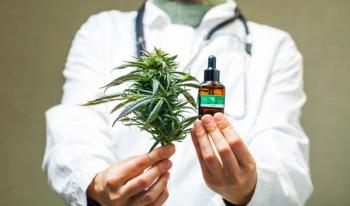
Organic Certification: Who’s In, Who’s Out, and Why It Matters

Organic certification assures consumers of compliance with strict USDA standards and enables access to premium markets. This guide explains who qualifies, common pitfalls, and helps prepare hemp and cannabis operators to navigate the process of organic certification.
Organic products continue to dominate grocery shelves, ingredient supply chains, and consumer shopping carts. Whether you’re sourcing cleaner inputs, improving environmental stewardship, or responding to consumer demand, organic certification is an increasingly valuable step for growers, processors, and manufacturers.
This guide breaks down everything you need to know about getting certified organic—who qualifies, what’s involved, and how to get started. Whether you’re just exploring the idea or preparing for your first audit, here’s what you need to know.
Why Organic Certification Matters
Organic certification is more than a marketing claim. It’s a regulated, legally protected designation that assures consumers your products meet strict environmental, agricultural, and processing standards. Certification is granted under the United States Department of Agriculture’s (USDA) National Organic Program (NOP), and it applies to agricultural products and ingredients that are grown, processed, and handled without prohibited substances.
Benefits of organic certification include:
- Consumer trust – The USDA Organic seal is widely recognized and trusted.
- Market access – Many retailers, distributors, and international buyers require certification.
- Environmental benefits – Organic production supports biodiversity, soil health, and water quality.
- Premium pricing – Certified products often command higher prices.
For operations already pursuing other quality certifications like cGMP (Current Good Manufacturing Practices) or GACP (Good Agricultural and Collection Practices), much of the foundational work may already be in place.
What Is the USDA National Organic Program (NOP)?
The National Organic Program (NOP) is a federal regulatory framework housed within the USDA’s Agricultural Marketing Service. It oversees:
- Organic standards (
Title 7 CFR Part 205 ) - Accreditation of certifying bodies
- Labeling requirements
- Compliance enforcement and investigations
NOP certifying bodies—also called accredited certifiers—are independent third-party agencies authorized to inspect and certify operations.
Who Is Eligible for Organic Certification?
Certification is available to operations that produce, process, handle, or store agricultural products. If you’re involved in any part of that supply chain and meet the standards, you may be eligible.
1. Farmers and Growers
Producers of crops or livestock can apply for certification if they avoid prohibited inputs and meet soil, animal welfare, and recordkeeping standards.
Examples:
- Hemp farmers
- Produce farms (vegetables, fruits, herbs)
- Grain, or legume growers
- Livestock producers (dairy, poultry, beef)
- Apiaries (beekeeping)
2. Processors and Manufacturers
Businesses that transform or package agricultural products are eligible, provided they use approved ingredients and processing aids.
Examples:
- Food manufacturers and snack producers
- Coffee roasters and juice companies
- Dietary supplement producers
- CBD product manufacturers (from compliant hemp sources)
3. Wild Crop Harvesters
Operators can be certified if they harvest wild plants sustainably and without synthetic inputs.
Examples:
- Wild mushrooms
- Foraged herbs or berries
4. Handlers, Distributors, Importers, and Storage Facilities
Facilities that store, distribute, or repackage certified organic products may need certification to maintain product integrity.
Examples:
- Ingredient warehouses
- Cold storage facilities
- Organic food importers
5. Retailers (in Limited Cases)
Retailers generally do not require certification unless they:
- Repackage organic products
- Prepare food labeled as organic in-store (For example, deli or juice bar)
Who Cannot Be Certified Organic?
Some operations and products are ineligible due to non-compliant practices or ingredients.
1. Use of Prohibited Substances
Products or operations using synthetic pesticides, fertilizers, GMOs, irradiation, or non-approved processing aids are disqualified.
Example: A farm using glyphosate (Roundup) cannot certify its crops.
2. Non-Agricultural Products
Only agricultural products are eligible. Non-food items made from synthetic or purely chemical ingredients are excluded.
Examples:
- Paint
- Motor oil
- Industrial cleaners
3. Improper Processing Aids
Processing aids must be on the National List of Allowed and Prohibited Substances.
Example: A juice manufacturer using a non-approved anti-caking agent could lose eligibility.
4. Cannabis Products Containing Tetrahydrocannabinol (THC)
Because cannabis is federally illegal, USDA organic certification is not available for marijuana products—even if grown organically. If you’re a cannabis cultivator in California, however, you’re in luck, as California’s Department of Agriculture has developed their own organic certification program called “Comparable to Organic.” As we wait for federal legalization of marijuana, perhaps more states with follow California’s lead and develop their own organic cannabis certification programs.
CBD from hemp can be certified organic if all other NOP rules are met and the hemp is from a compliant source.
Note: California offers a state-run certification program called “Comparable to Organic” for cannabis cultivators.
5. Non-Compliant Ingredients
A single non-organic or non-NOP-approved ingredient can disqualify an entire product.
Example: A nutrition bar made with non-organic glucose syrup is ineligible for certification.
6. Failure to Maintain Organic Integrity
Operations that allow cross-contamination, commingling, or have inadequate documentation may lose or be denied certification.
What Can You Say Without Certification?
If your operation is not certified organic, your ability to use the term "organic" is very limited.
Labeling Rules:
- “100% Organic” – All ingredients and processing aids must be certified organic.
- “Organic” – At least 95% of ingredients must be organic; the rest must be NOP-approved.
- “Made with Organic Ingredients” – 70% or more of the product must be organic. The USDA seal is not allowed.
- Less than 70% Organic – You may only list individual organic ingredients in the ingredient statement (For example, “organic peppermint oil”).
Important: Without certification, you cannot legally claim your product is organic—not on your label, not online, not anywhere. Misusing the term “organic” can result in fines up to $11,000 per violation. You can list organic ingredients in the ingredient panel (For example, “organic peppermint oil”), even if you’re not certified—just don't claim the whole product is organic.
Steps to Get Certified Organic
Getting certified involves several phases, from document prep to annual recertification. Here's how the process typically works:
1. Evaluate Your Eligibility
Review your inputs, ingredients, and processes. Determine if you meet the NOP standards.
2. Develop Standard Operating Procedures (SOPs)
Prepare documentation that outlines your organic practices. SOPs include these subjects:
- Cleaning protocols
- Traceability systems
- Input management
- Pest control methods
- Staff training
3. Source Certified Organic Inputs
All ingredients and processing aids must be certified or allowed under the NOP. Verify suppliers and request organic certificates for each input.
4. Select a Certifying Agent
Choose an accredited certifier based on your region, industry, and product type. Each agency has its own fees and timelines.
5. Submit an Application
Complete your Organic System Plan (OSP) and submit it to your certifier along with required documentation and payment.
6. Prepare for the Initial Audit
An inspector will visit your facility to review:
- SOPs and recordkeeping systems
- Staff training
- Ingredient sourcing
- Equipment sanitation
- Facility layout and flow
- Potential contamination risks
7. Address Any Non-compliances
Following the inspection, you may receive a list of nonconformances. Submit a corrective action plan detailing how each issue will be resolved and when.
8. Certification Issued
Once your plan is approved and all requirements are met, your certifier will issue your organic certificate. You may begin using the USDA Organic seal.
9. Annual Recertification
Organic certification is not a one-time event. Annual inspections and continuous documentation are required to maintain your status.
Common Challenges and How to Avoid Them
Despite good intentions, some operations struggle with certification due to oversights in documentation, training, or ingredient sourcing. Here are the most common pitfalls:
- Inadequate Recordkeeping – Operations must document every organic input, process, storage procedure, and cleaning protocol in detail.
- Unverified Suppliers – A single ingredient from a non-certified source can compromise your entire product line.
- Improper Labeling – Misusing the USDA seal or misrepresenting organic status can result in enforcement action.
- Cross-Contamination – Shared equipment must be properly cleaned and documented between organic and conventional runs.
- Untrained Staff – Staff must understand procedures, labeling rules, and recordkeeping requirements.
Staying compliant requires a continuous commitment to traceability and process control.
What Happens After You’re Certified?
Once certified, your business enters a cycle of ongoing compliance:
- Annual audits – Conducted by your certifier to ensure continued adherence to NOP standards.
- System updates –Hire a 3rd party consultant to conduct spot check audits, and adjust SOPs if you add new products, change suppliers, or update processes.
- Staff training – Should be conducted upon hiring new employees and then repeated regularly to reinforce best practices.
- Label reviews – Any new packaging must be reviewed to ensure proper use of the organic seal.
Ongoing compliance is essential—not just for regulatory reasons, but for maintaining consumer trust.
State-Level Organic Cannabis Certification
While USDA certification isn’t available for THC cannabis products, some states are beginning to fill the gap. California, for example, has created the “OCal” certification for marijuana products that meet standards “comparable to organic.”
Producers in other legal states should monitor for similar programs or advocate for the creation of comparable certifications. A company can always become organic compliant with the help of a consultant, and then get the certification once available to the industry. In the long run, federal legalization may allow for national organic standards to apply to cannabis as well. Being prepared is always a good thing in this industry.
Organic certification is a powerful tool for businesses seeking to demonstrate their commitment to health, sustainability, and integrity. It provides access to new markets, supports environmental best practices, and builds long-term consumer trust.
The certification process may seem intimidating at first, but with a clear understanding of the steps and requirements, it’s a manageable, and worthwhile investment. Whether you’re a grower, processor, or manufacturer, organic certification offers a path forward for those ready to operate at a higher standard.
About the Author
Kim Anzarut, CQA, CP-FS is the CEO and founder of Allay Consulting. Direct correspondence to:
Newsletter
Unlock the latest breakthroughs in cannabis science—subscribe now to get expert insights, research, and industry updates delivered to your inbox.





